
18 10 23 30 We Need To Talk About The Metaverse - Nick Shah, Peterson Technology Partners (PTP) What If Aging Gave Us Superpowers? - Steven Kotler, Flow Research Collective Using Empathy And Technology For Effective HR - Jason Richmond, Ideal Outcomes, Inc. NOVEMBER 2022 • Vol. 10 • No.11 (ISSN 2564-1956) HUMAN RESOURCES - PARTNERS IN ADDRESSING THE HUMAN CONSEQUENCES OF AGEISM - Patti Temple Rocks, Author & Founder, Temple Rocks Consulting A CEO’s Perspective On The Crucial Roles That HR Plays Today - Frank O’Connell, Tuckerman Capital

Human ResourcesPartners In Addressing The Human Consequences Of Ageism Ageism was and is a problem in the workplace - Patti Temple Rocks, Author & Founder, Temple Rocks Consulting 07 INDEX On the Cover HR Strategy & Planning Excellence NOVEMBER 2022 Vol.10 No.11 (ISSN 2564-1956) Articles 21 Workers Age 65+ Are More Likely To Identify With Their Job Than The Younger Bunch A few factors to consider - Toby McInnis, Writer, tobymcinnis.com 27 Four Ways HR Leaders Can Keep Up With Evolving Employee Expectations Organizations must create opportunities to increase employee engagement - Ian White, CEO, CTO, and Founder, ChartHop 36 The Future Of Work: Five Considerations For Flexibility Flexibility is the new currency for employees - Keith Falk, Regional Managing Director, OneDigital 13 Quiet Quitting: What To Know & Why Business Owners Need To Stop Calling It A “Problem” An opportunity for business leaders to enact positive change in their enterprise - Ethan Drower, Co-Founder and Operating Partner, CiteMed 34 Exclusive Interview with Trinda Searle, Executive VP, People & Culture, 360insights CHRO CORNER
We Need To Talk About The Metaverse

What is shaping our future, especially in tech? - Nick Shah, Founder and President, Peterson Technology Partners (PTP)
What If Aging Gave Us Superpowers?
Three keys to peak performance aging - Steven Kotler, Executive Director, Flow Research Collective


A CEO’s Perspective On The Crucial Roles That HR Plays Today



The HR Director is one of the most critical hires a CEO will make - Frank O’Connell, Co-Founder, Tuckerman Capital
10 18 23 30
Using Empathy And Technology For Effective HR

What we’ve learned from the remote work experience - Jason Richmond, Founder, Ideal Outcomes, Inc.

Top Picks
INDEX
How are our HR Strategy & Planning Products and Ser vices helping to make you smar ter?
HR Strategy & Planning Excellence - Monthly Interactive Learning Journal

This monthly interactive learning experience captures key metrics and actionable items and keeps you focused on your HR strategy and planning goals and solutions.
HR Strategy and Planning Webcasts for Credit
HR.com webcasts deliver the latest HR Strategy and Planning industry news, research trends, best practices and case studies directly to your desktop. Webcasts are available live online with a downloadable podcast and a copy of the slides (PDF) available before and after each

HR Strategy and Planning Vir tual Events
In HR Strategy and Planning events, discover the business process for ensuring that an organization has suitable access to talent to ensure future business success, trends in strategic planning and analytics, resource requests, analyzing resource utilization, forecasting capacity, and managing human resources. The learning experience offered teaches how to capture key metrics and actionable items and keep you focused on your HR strategy and planning goals and solutions and make them impactful. Each Vir tual Event consists of up to 10 credit webcasts.
HR.com’s one-hour webcasts, in every HR specialty including HRIS and Payroll, are pre-approved for HRCI and SHRM credit (excluding Demo webcasts).
HR Strategy and Planning Community
Join almost 70,000 HR.com members with a similar interest and focus on workforce planning and analytics. Share content and download reserach repor ts, blogs, and ar ticles, network, and “follow” peers and have them “follow” you in a social network platform to communicate regularly and stay on top of the latest updates. This well established Workforce Planning and Analytics Community is an invaluable resource for any HR professional or manager
Use these invaluable HR Strategy & Planning resources today! For more information phone: 1.877.472.6648 | email: sales@hr.com | www.hr.com
Editorial Purpose
and Deepa Damodaran Excellence Publications Managers and Editors
HR Strategy & Planning Excellence (ISSN 2564-1956)

Babitha Balakrishnan Editor
Arun Kumar R Design and Layout (Digital Magazine)
Vibha Kini Magazine (Online Version)
Submissions &
Debbie Mcgrath Publisher, HR.com
Babitha Balakrishnan Editor, HR Strategy & Planning Excellence

Ageism in the Workplace, Metaverse & the Future of Work
In today’s world of work, everyone is aware and educated about the value of an inclusive work environment, but still age discrimination is prevalent. Now with the increase of older employees in the workforce, age discrimination will become a bigger issue, and will require strategic planning to address it. How long can you continue to perform at your best? How can organizations effectively create a positive working environment free of age discrimination in the workplace?
Ageism was and is a problem in the workplace. However, the way it is experienced by people and the way it is managed by HR professionals are entirely different. Temple Rocks Consulting Founder, Patti Temple Rocks in her article, Human Resources - Partners In Addressing The Human Consequences Of Ageism shares what ageism feels like to people who are experiencing it and what needs to be done.
If it’s possible to sustain peak performance long into our later years, at what age do we need to begin training for our later years in order to make this possible? Flow Research
Collective's Steven Kotler in his article, What If Aging Gave Us Superpowers? highlights three keys to peak performance aging.
The Metaverse has become one of the hottest technological and socio-economic topics. What's the next big step? Peterson Technology Partners' Nick Shah in his article, We Need To Talk About The Metaverse, discusses what is shaping our future, especially in tech.
Also read an exclusive interview with Trinda Searle, Executive VP, People & Culture, 360insights, where she talks about her HR journey and shares valuable insights on various workplace issues, building the HR team of the future and much more.
In brief, the November edition of HR Strategy & Planning Excellence includes informative articles that focus on ageism in the workplace, metaverse, quiet quitting, the future of work and much more.
We hope you enjoy reading all the articles and get back to us with your valuable feedback.
Happy Reading!
Write to the Editor at ePubEditors@hr.com
HR Strategy & Planning Excellence is published monthly by HR.com Limited, 56 Malone Road, Jacksons Point, Ontario L0E 1L0
Internet Address: www.hr.com
Disclaimer: The views, information, or opinions expressed in the Excellence ePublications are solely those of the authors and do not necessarily represent those of HR.com and its employees. Under no circumstances shall HR.com or its partners or affiliates be responsible or liable for any indirect or incidental damages arising out of these opinions and content.
EDITOR’S NOTE
Subscribe now for $99 / year And get this magazine delivered to your inbox every month Become a Member Today to get it FREE! SIGN UP OR For Advertising Opportunities, email: sales@hr.com Copyright © 2022 HR.com. No part of this publication may be reproduced or transmitted in any form without written permission from the publisher. Quotations must be credited.
Our mission is to promote personal and professional development based on constructive values, sound ethics, and timeless principles.
Director
Marketing, and
Babitha Balakrishnan
Excellence Publications Debbie McGrath CEO, HR.com - Publisher Dawn Jeffers VP, Sales Sue Kelley
(Product,
Research)
Correspondence Please send any correspondence, articles, letters to the editor, and requests to reprint, republish, or excerpt articles to ePubEditors@hr.com For customer service, or information on products and services, call 1-877-472-6648
In a world of unparalleled challenges (global pandemic, racial injustice, politi cal rivalry, digital 4.0, emotional malaise), uncertainty reigns. Finding opportu nity in this context requires harnessing uncertainty and harnessing starts with reliable, valid, timely, and useful information. The Excellence publications are a superb source of such information. The authors provide insights with impact that will guide thought and action.
Dave Ulrich
Rensis Likert Professor, Ross School of Business, University of Michigan Partner, The RBL Group



Excellence publications are my ‘go-to’ resource for contemporary and action able information to improve leadership, engagement, results, and retention. Each edition offers rich and diverse perspectives for improving the employee experience and the workplace in general.
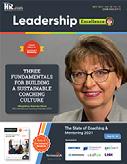


Julie Winkle Giulioni
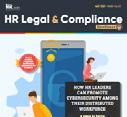

Author, Virtual /Live Keynote Presenter, Inc.’s Top 100 Leadership Speakers
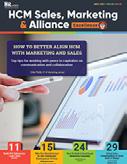

I regularly read and contribute to Leadership Excellence and Talent Manage ment Excellence. I use many of the articles I read to augment my own presen tations and I often share the articles with my clients. They are always quick, right on target for the latest issues in my field, and appreciated by my clients.
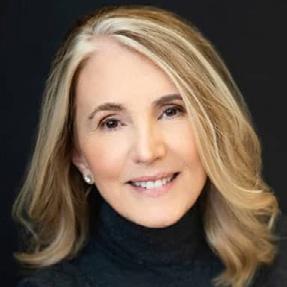



If you want to stay up to date on the latest HR trends, choose a few of the dif ferent issues from the Excellence series of publications.
 Dr. Beverly Kaye CEO, BevKaye&Co.
Dr. Beverly Kaye CEO, BevKaye&Co.

We’re eager to hear your feedback on our magazines. Let us know your thoughts at ePubEditors@hr.com WHY EXCELLENCE PUBLICATIONS?
Human Resources - Partners In Addressing The Human Consequences Of Ageism

Ageism was and is a problem in the workplace
By Patti Temple Rocks, Temple Rocks Consulting
When
I decided to write and speak about ageism in the workplace, I thought it was a growing problem and I wanted to make sure I wasn’t the only one who felt that way. I got to work proving (or not) my thesis. I talked to people impacted by ageism, reached out to my trusted circle of HR partners, and did a whole lot of secondary research.
My thesis was confirmed by all. Ageism was – and is – a problem in the workplace.
What I found interesting though – and even a little surprising – was how differently that problem was expressed by people experiencing it and the HR professionals tasked with managing it.
My HR colleagues were certainly aware of the legal risk that can come from age discrimination litigation –or threat of litigation. They were equally aware of and enraged by, overt ageism in the workplace - incendiary comments, poorly phrased job postings, uneven discipline, etc. They work to provide their business partners with data on the demographics (including age) of the employee population to encourage a
balanced approach to layoffs. They reviewed and wrote policies to protect all employees.
HR professionals had an objective and fact-based perspective. This was a sharp contrast to what I heard from those impacted by ageism. They rarely had facts or data. They had feelings and those feelings were often intense and almost never positive.
Submit Your Articles HR Strategy & Planning Excellence presented by HR.com November 2022 7
COVER ARTICLE
I have not been trained in Human Resources and would never have had the success I have had without my HR Partner so I won’t pretend to have advice about how they should do their jobs. But what I thought might be helpful, would be for me to share what ageism feels like to the humans that they are there to protect.
“I felt invisible.”
I heard this word repeatedly. Ageism is rarely as obvious as ‘I’m sorry we have to let you go.’ It much more likely comes in the form of marginalization in the current role, being asked to take a new not-as-impor tant role or simply being neglected in terms of training and growth opportunities or worst of all, simply ignored. One person I spoke with, “Nancy” described watching her new boss walk directly past her, without making eye contact, stop at the desk of one of her subordinates to discuss a new seating chart for Nancy’s team. Not surprisingly, Nancy was part of a subsequent downsizing weeks later.
My advice to my HR Partners: “Nancy,” a veteran in the business would have understood the layoff and eventually healed, but the hurt she felt by being treated as invisible by leadership didn’t – and won’t heal. Pay attention to how the leaders are treating your older workers. You won’t always like what you see.
“Seeing
When I first started writing about ageism, I didn’t expect any interest in the topic from that often-con founding Millennial cohort. I was delighted to have their allyship, but I wanted to understand it better. The first reason why they care is that this generation is deeply connected and committed to workplace culture. When they see a boomer being diminished or losing their job, they could breathe easy knowing it’s a long way away for them, but they don’t. Instead, they see someone they may have admired and respected, or even just passed in the hall being treated in a way that doesn’t feel good to them.

There is another reason this demographic is invested in this issue – their parents. Most millennials grew up in homes where both mom and dad worked and whose careers were important to them. The young woman who told me about the devastation she felt on behalf of her dad, knew how important his job was not just to his family’s bank account but to his sense of purpose.
My advice to my HR Partners: The entire workforce is paying attention to culture and expectations of a fair and equitable workforce have never been higher. You have more generations than ever in the workplace, and your youngest workers rely on advice and mentorship for your oldest workers. The true “cost” of age discrimination is not measured by litigation or settlement costs alone – there is a much harder to measure, but just as damaging, blow to culture.
“I have never had a conversation about when I might want to retire with anyone at work. It was like this secret we were both supposed to keep.”
As we move through our careers, we have many conversations with our managers about our performance and our future growth. Our HR partners train us to do so. A common, if not mandatory, part of every performance review is a discussion of the future. But based on my interviews, those conversations don’t happen as frequently (or sometimes at all) with older employees. I can only
Submit Your Articles HR Strategy & Planning Excellence presented by HR.com November 2022 8
my dad lose his job and come home so ashamed after taking care of us our whole lives was devastating.”
Human Resources - Partners In Addressing The Human Consequences Of Ageism
speculate as to why, but I suspect it has to do with the fact that no one in the organization has thought about a five-year horizon for older workers. I was shocked to learn in my research that one of the most trusted career trajectory modeling programs showed the employee “peaking” in their 40s. That might have been true when retirement was happening at a younger age because people were dying in their 70s, but with the Baby Boomer population staying healthy and living longer, it is time to adjust our career planning models.
My advice to my HR Partners: Everyone’s career will come to an end at some point. It is okay to talk about it. In fact, it is imperative to talk about it. I suspect that younger managers might have a hard time broaching the topic – maybe they are afraid they will say the wrong thing and put the company at risk. And of course, there is never any real guarantee for any of us for a job in 5 years, but to simply choose not to talk about the future with people over 50 is simply not a good practice. Plan to have open and honest conversations with older workers and teach your managers how to do so as well.
“If only they would have been honest with me about the financial part, I gladly would have been open to considering an alternate role.”
It is no secret that most RIFs are based on a need to reduce cost. Nor is it a secret that older workers tend to have higher salaries (years of performance and COLA increases add up) but what I heard from many people was a bit surprising. Your employees may very well be open to a reduced salary – if it comes with a change in role and expectations. In a conversation with the chief creative officer of a global ad agency, I learned that she was likely going to have to lay off one of her senior producers. She was convinced of his value; just not sure she could afford him and was also worried that the non-stop travel was becoming too much. After thinking about his and the agency’s needs, she created a new less-than-full-time position, where he became a production ombudsman, and as the veteran he was, he was great at it. Yes, it was a pay cut for him, but he got to keep his job (and insurance) and remained a happy and engaged
employee – and met a need for the agency. A win/win simply by thinking differently about a role.
My advice to my HR Partners: Certainly, the example I shared won’t work for every organization but thinking differently and more creatively about roles – and thinking with the unique strengths and talents of older workers in mind can and will work for every organization. And who better than HR Partners to lead the way.
Over the course of an impressive four-decade career, Patti Temple Rocks has held senior leadership positions in three different sectors of the communications industry: PR, advertising, and client side. She served as the Chief Communications Officer for The Dow Chemical Company and Chief Reputation Officer for Leo Burnett Worldwide. She is an inspirational leader, builder of teams, creative thinker, problem-solver, and agent of change. The author of I’m Still Not Done: It’s Time to Talk About Ageism in The Workplace, Patti is passionate about discussing and fighting age discrimination and helping people understand how ageism stunts business growth and reflects poorly on our society. As a public speaker and consultant, Patti works with businesses that wish to change for the better and implement effective practices to fight ageism in the woace.

Would you like to comment?
Submit Your Articles HR Strategy & Planning Excellence presented by HR.com November 2022 9
Human Resources - Partners In Addressing The Human Consequences Of Ageism
We Need To Talk About The Metaverse
What is shaping our future, especially in tech?
By Nick Shah, Peterson Technology Partners
“Once a new technology rolls over you, if you’re not part of the steamroller, you’re part of the road.”—Stewart Brand, Writer
As a leader in the recruiting industry who operates primarily in the future-tech space (cloud computing, data science, and AI, especially AI), I am invested in tech industry trends. AI has always been of great interest to me and was the motivation for my company to start exploring the possibilities of AI disruption in recruitment.
As the head of an IT staffing firm, I need to know where the industry is headed, what new competencies are on the rise, and what new roles are being shaped. It is my responsibility to anticipate the needs that my clients will have in the future and prepare for them. It is also my responsibility to educate consultants on any directional changes that might impact their careers.
Where, then, is the IT industry headed?
I believe that the advent of the metaverse is shaping up to be one
of the most significant tech innovations of our generation.
Metaverse is on the Verge of Blowing up
“The metaverse is here, and it’s not only transforming how we see the world but how we participate in it—from the factory floor to the meeting room.”— Satya Nadella, Microsoft CEO.
The Metaverse has become one of the hottest technological and socio-economic topics. The conversations around this new tech have already expanded far beyond the realm of the technical and into exciting tangents such as social contract theory, economics, and philosophy.
On the technical side, a handful of companies are already venturing into uncharted territories by combining different technologies like VR, 3D animation, blockchain, and many others, to create services for this new digital world. The
“computerized, networked, and interconnected world that we live in” that Bruce Schneier talks about, except this is bigger than just IoT. Instead, the metaverse can potentially be mixed into, and augment, not just our world but our reality.
Consider this—for a global tech giant like Facebook to change its name to Meta and invest billions in developing future tech in this direction demonstrates that the metaverse is set to enter the mainstream very soon. Microsoft, Nvidia, Roblox, and other tech giants are set to follow in Facebook’s (or should I say Meta’s) footsteps and launch their own metaverse-based platforms in the near future.
On the non-technical side, interesting conversations are being generated across multiple socio-economic disciplines about the impact this new platform would have on human interaction, the way we do business, and the way we shape our realities.
Submit Your Articles HR Strategy & Planning Excellence presented by HR.com November 2022 10
TOP PICK
Recent research published by the Analysis Group has predicted that metaverse-related growth could contribute as much as $3 trillion to the global economy within the next decade—a growth pattern that outstrips any other single tech system in the 21st century, second only to smartphones! A report by McKinsey suggests that $120 billion have been invested in metaverse tech in the first quarter of 2022 alone.
Think of the enormous impact that smartphones have had on human development over the last decade. The ways we communicate and interact with each other, and define relationships. The human connection itself has been redefined by the ubiquity of smartphones.
Parallels with Smartphones and IoT
We can’t imagine navigating the world today without a smartphone (Approximately 6.68 billion people today are regular smartphone users. That’s 83% of the global population). “There’s an application for everything!” is a common cry amongst smartphone users discovering the joys of food delivery apps, ride-share apps, interior design apps, dating apps, productivity apps, yoga apps... the list is endless.
All our essential day-to-day functions from banking to healthcare can be performed on smartphones. Most developed economies today operate with smartphone
access as a basic assumption. As do most businesses. Through the use of smarIoT-powered other IoT-powered devices most human beings have developed an alternate identity. An online self to match your offline persona. Via this surrogate, you occupy space on virtual platforms (like social media), interact with the online surrogates of other individuals, and conduct socio-economic transactions. Additionally, with the help of smartphones, this online self is ever-present.
If predictions are true, metaverse tech is headed in the same direction. It will grow into an internet-based platform with near-universal access and 3D identities, a virtual or mixed reality world where we exist parallel to the real world.

Submit Your Articles HR Strategy & Planning Excellence presented by HR.com November 2022 11
We Need To Talk About The Metaverse
Where Does AI Feature?
The short answer is everywhere.
As metaverse tech expands AI can potentially play an important role in its development—from the infra structural level to the experiential.
Infrastructural: The immensely scalable and "always-on" nature of the metaverse means that it will depend on AI support to keep its infrastructure running smoothly. In this endeavor AI experts will have to team up with Dev Ops and other parallel proficiencies to create scalable solutions in communications, software base, and hardware to keep the whole operation running and troubleshooting.
Interactive: The immersive experience that the platform offers also means that AI will be required to play the role of guides, guaranteeing 24x7 support for new and confused users. Think virtual chatbots.
Trade and ownership: Like most big tech today the metaverse will be consumer driven and crypto-cur rency, blockchain technologies, and NFTs will be the basis of consumer transactions. Automating smart contracts, decentralizing ledgers, and blockchain tech will fall entirely within the realm of AI.
Personalization: The ultimate goal of any metaverse-based tool will be to offer a personalized experience. AI can provide this personalization by offering a digital experience tailored to each individual’s needs and learning paths using tools like NLP and computer vision.
What’s the Next Big Step?
In one word—consciousness.
Not AI consciousness (that is still a pipe dream no matter how advanced Google’s AI), but the deliberate study of human consciousness to try to find answers within ourselves to UI/UX questions posed by mixed reality i.e., a reality that is enhanced by interactions on the metaverse.
The science and philosophy of tare conscious mind is fascinating. Reality is fundamentally the basis upon which every individual constructs their version of the world and it’s built largely on preconceptions and best guesses. Which makes it, at once, both unique and mutable.
Scientists say that the last 20 years have been a golden age for the study of human consciousness and recent developments have led to a range of impactful real-world applications. I think virtual-world applications are far more exciting. For example, in 2021, neurosurgeons at John Hopkins performed the first-ever live patient surgery using mixed-reality devices. The doctors wore AR headsets that gave them an interactive display of the patient’s anatomy.
We can’t make the AI think of itself (just yet) but we can try to better understand how the human mind works to find
ways to enhance the metaverse experience.
We’ve Been Here Before
The exponential progression of tech means that major shifts in platforms occur at regular and decreasing intervals of time. The leap from mainframe computers to personal computers took nearly half a century. The progression from PCs to smartphones took less than two decades.
We are at the threshold of another revolution, one that will change the shape of our world. Metaverse tech’s impact on the IT industry will be game-changing. AI, data science, cyber security (and crime!), cloud computing, everything will be impacted by the coming of this new, reality-bending tech. We just have to be ready to evolve with it.
Nick Shah is the Founder and President of Peterson Technology Partners (PTP), and the Chief Executive Officer. After successfully experimenting with various business ventures, Nick began Peterson Technology Partners in 1997, with the goal of connecting Chicago’s top IT talent with its top companies.
Would you like to comment?

Submit Your Articles HR Strategy & Planning Excellence presented by HR.com November 2022 12
We Need To Talk About The Metaverse
Quiet Quitting: What To Know & Why Business Owners Need To Stop Calling It A “Problem”
An opportunity for business leaders to enact positive change in their enterprise
By Ethan Drower, CiteMed
It seems like just yesterday ‘The Great Resignation’ was the biggest phenomenon being experienced and discussed across virtually every industry. Now, however, there is a whole new trend happening in the workplace that is swiftly gaining traction with employees: quiet quitting. Countless news outlets are currently abuzz with this topic, and many business owners are now wondering what this movement is all about. A lot of company leaders are also labeling “quiet quitting” a “problem” and trying to figure out how to prevent it from happening in their enterprise.
Are you worried about quiet quitting happening in your own business? Do you want to know the signs that your employee is quiet quitting and what it means? Well, in my own journey as the co-founder and Operating Partner of CiteMed, I have seen other business leaders in my network experience quiet quitting in their own enterprise. Here is what to know about this movement and where the “problem” actually lies:
What Exactly is Quiet Quitting?
Let me say this first: quiet quitting has always been seen in the workforce — it just wasn’t a popular topic until a TikToker posted a video about it that went viral in July 2022. In the video, he says that when you quiet quit, you don’t outright quit your job; you just quit the idea of going above and beyond at work, as your life isn’t defined by your work output. So basically, when an employee quiet quits, they perform the duties they are being paid to do but don’t take on additional projects or responsibilities, strive to over-achieve, or allow their work to cause them any stress in their personal lives.
Submit Your Articles HR Strategy & Planning Excellence presented by HR.com November 2022 13
Signs an Employee Has Opted to Quiet Quit
It is quite easy to tell if your employee has quiet quit at work. Do they log off their computers or leave the office at the exact same time every day? Do they refuse to work more than the eight hours a day they were hired to do, even if projects are not yet complete? Do you ever ask them to take on additional tasks and they flat out tell you “no” without explaining why? Do they show no interest in team bonding activities outside of work hours? If you answered “yes” to any of these questions, then your employee has likely quiet quit.
How the Covid-19 Pandemic Boosted the Quiet Quitting Phenomenon
While quiet quitting has always been apparent in the workforce, I definitely believe that it has increased since the pandemic began. This is because the pandemic forced employees to stay at home for long periods of time, which gave them a lot more time to reevaluate their lives and what they consider to be the most important for their overall fulfillment. They also
have seen their peers join the Great Resignation that stemmed from the pandemic, which showed them that they too are not stuck in the companies they work for.
Employees are now in the driver’s seat and know companies are desperate to prevent the high turnover that is seen in virtually every industry. So these employees know they can work the minimum they are expected to work without being fired.

Are Certain Age Cohorts More Likely to Quiet Quit Than Others?
Gen Z and millennials are definitely more susceptible to quiet quit than older generations. This is because they are much more connected on social media networks, where they are heavily influenced by others who post their journeys of quiet quitting and finding paths towards greater life fulfillment. Older generations will stay and grow with the same company for decades because they place high importance on security and comfort, while Gen Zers and millennials have no issue leaving jobs that don’t make them feel fulfilled.
Submit Your Articles HR Strategy & Planning Excellence presented by HR.com November 2022 14
Quiet Quitting: What To Know & Why Business Owners Need To Stop Calling It A “Problem”
How Quiet Quitting Varies Between Work Operation Models
Remote workers are much more susceptible to quiet quit than in-person employees. This is because those who work from home can easily turn off their laptops or computers for the day once the clock hits 5 pm, while in-person employees can have trouble saying “no” when their bosses ask them face-to-face if they can work late. Also, in-person employees can be influenced to work longer hours when they see their coworkers also working longer hours.
STOP Calling Quiet Quitting a “Problem”
While I believe that quiet quitting is very apparent all over the workforce right now, I wouldn’t label it a “problem”. Employees are just standing up for their rights and ensuring they are not being taken advantage of by the businesses and large corporations they work for. And why should employees be expected to work more and take on more projects than they are being paid to do? Why should they “go above and beyond” for companies that don’t compensate them for it?
Quiet quitting isn’t the problem — the main issue is these businesses that think it’s fine to overwork their employees without giving them a pay raise. This is what causes a major drop in employee morale and costly turnover for businesses. Employees want to work for businesses that care about them. Thus, the real changes need to happen in the companies’ operations — if projects will require longer hours or more manpower, businesses should hire a contractor or give their employees a pay raise to incentivize them to take on the extra work.
Find the Opportunity When an Employee Quiet Quits
Staff members are the backbone of a company, and their well-being should be of utmost importance to any business leader. Quiet quitting is an employee’s way of ensuring that they can maintain a healthy work-life balance while still doing the required work they are being paid to do. That said, if you notice that a staff member is showing any of the aforementioned signs of quiet quitting, this can be a real opportunity to
enact positive change in your enterprise and enhance employee loyalty across your whole organization.
For example, quiet quitting can be a sign that you are not giving your staff members enough opportunities to level up their careers with exciting promotions and associated pay increases. Providing these opportunities can really enhance your employees’ morale and pique their interest in excelling in their positions and growing with your company.
Or, quiet quitting can be a sign that your work culture has become stale and boring, which could lead to other staff members actually flat out quitting to pursue positions at other companies. So it would be in your best interest to set up fun events and employee engagement initiatives that will help create a positive culture in your enterprise.
To Wrap It All Up
Quiet quitting is a major movement happening in workplaces across virtually every industry. However, rather than calling it a “problem”, it can be a major indicator of issues in a company’s overall operations and culture. So quiet quitting really presents an opportunity for business leaders to enact positive change in their enterprise.
Ethan Drower is the Co-Founder and Operating Partner of CiteMed, which is revolutionizing the European Union Medical Device Regulation (EU MDR) process. A renowned business expert, Ethan educates others on the fundamentals of launching a successful software product, tips for aspiring entrepreneurs, and more.
Would you like to comment?

Submit Your Articles HR Strategy & Planning Excellence presented by HR.com November 2022 15
Quiet Quitting: What To Know & Why Business Owners Need To Stop Calling It A “Problem”
HRCI® & SHRM® CERTIFICATION PREP COURSES
GROUP RATES AVAILABLE
For HR Professionals
Show that management values the importance of the HR function, and has a commitment to development and improvement of HR staff.
Ensure that each person in your HR department has a standard and consistent understanding of policies, procedures, and regulations.
Place your HR team in a certification program as a rewarding team building achievement.
For Your Organization
Certified HR professionals help companies avoid risk by understanding compliance, laws, and regulations to properly manage your workforce.
HR Professionals lead employee engagement and development programs saving the company money through lower turnover and greater productivity and engagement.
A skilled HR professional can track important KPIs for the organization to make a major impact on strategic decisions and objectives, including: succession planning, staffing, and forecasting.
HR.com/prepcourse CALL TODAY TO FIND OUT MORE 1.877.472.6648 ext.
|
3
sales@hr.com
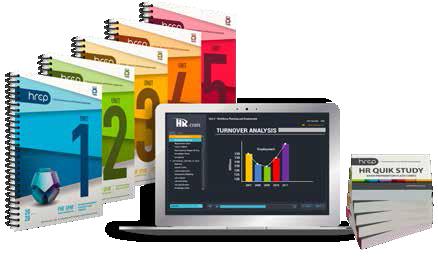
1 . Less expensive than a masters or PhD program, and very manageable to prepare with 2. legislation and best practices 3. Recognized, Industry benchmark, held by 500,000+ HR Professionals We offer group rates for teams
or more for our
or aPHR courses. For
we
overall
Groups
All
purchases
the tools and updates needed
CALL TODAY TO FIND OUT MORE 1.877.472.6648 ext. 3 | sales@hr.com | HR.com/prepcourse Group Rate Options 1 2 3
of 5+
regularly scheduled PHR/SPHR/ SHRM
groups of 12+,
can design a more customized experience that meets your
length of the course.
rates for HRCI exams are also available as an add-on.
group
come with 1 year of HR Prime membership for each attendee to gain
to stay informed and compliant
What If Aging Gave Us Superpowers?
Three keys to peak performance aging
By Steven Kotler, Flow Research Collective
Let’s start with the questions. No pressure, by the way, but just know that your answers could determine the quality of the rest of your life.
Question One: How do you become an adult?
Serious question. Are you an adult? How did it happen? How did you grow up? What does it mean to grow up? Is there a right way to become an adult? A wrong way? And, maybe most importantly, what happens in the second half of our lives if we get the first half wrong?
Okay, while you’re thinking about your answer, consider another….
Question Two: Is there an age limit on peak performance?
This is another serious question. If you’re reading this article, it’s probably because peak performance and flow really matter to you. But riddle me this—for how long? How long can you continue to perform at your best? Is there an age limit for thriving? What about flow? Does our ability to get into flow, like many other cognitive skills, decline over time? And if it does decline, crucially, is there any way to stop the slide?
And while you’re thinking about that answer, let’s add in a hypothetical….
Question Three: If it’s possible to sustain peak performance long into our later years, at what age do we need to begin training for our later years in order to make this possible?
Now, let’s turn to the answers, which will, of course, produce even more questions, but one step at a time.
First, the question of how we grow up is central to the field of adult development. Sigmund Freud had an opinion. He argued development was biological. We have basic drives. We react to those drives. And we grow up automatically, as a result.
Freud isn’t right. But he isn’t wrong.
Psychologist Erik Ericsson also took a swing. His version is the mouthful known as “psycho-social development,” which means we grow up by confronting a series of crises that threaten our psychological stability (that’s the psycho part), and that these crises always involve other people (that’s the social part).
And Ericsson, like Freud, is both right and wrong.
One of my heroes, Bernice Neugarten, also had a theory. She argued that humans are subject to social clocks—essentially cultural peer-pressure for an individual to meet certain criteria for “adulthood” by a certain age.
Submit Your Articles HR Strategy & Planning Excellence presented by HR.com November 2022 18
TOP PICK
Social clocks are the voice of society saying: This is the right time to choose a career; this is the right time to settle down and get married; this is the right time to start a family. We can give into the pressure and be “on schedule” or ignore the pressure and move “off-schedule” but either way, it’s the existence of this schedule and our reaction to it that pushes us into adulthood.
And Neugarten too is right and wrong. Before we dive into those details, let’s first answer the next question: Is there an age limit on peak performance?
Yes and no, though, no and yes is probably closer to the truth. But to understand why, we have to return to those details about adult development.
Turns out, there is no right way to grow up, but there is a wrong way.
Put differently, a growing pile of research shows we can sustain peak performance farther into life than anyone thought possible. Sure, our physical skills begin to decline in our thirties. Sure, they drop roughly one percent a year thereafter. That’s where the biology stands today. But we are also starting to understand






how to offset this decline without a significant amount of performance loss. And there’s an opportunity for enormous performance gain.
As we enter our fifties, if we get “it” right, we gain access to a suite of legitimate cognitive superpowers. Over the course of that decade, there are fundamental shifts in how the brain processes information. In simple terms, our ego starts to quiet, and our perspective starts to widen. Whole new levels of intelligence, creativity, empathy and wisdom open up. As a result, key downstream skills like critical thinking, problem solving, creativity, communication, cooperation and collaboration all have the potential—if properly cultivated—to skyrocket in our later years.
Yet, access to our superpowers isn’t automatic.
To produce the necessary brain shifts, we must first pass through a series of gateways. Work in adult development shows that crossing these thresholds is necessary for maintaining happiness and well-being into our august decades. More important here, if the goal is peak performance aging, passing through these thresholds and unlocking our superpowers significantly offsets the natural decline that comes with time.
Submit Your Articles HR Strategy & Planning Excellence presented by HR.com November 2022 19
What If Aging Gave Us Superpowers?
What are those gateways?
By age thirty, we need to have figured out who we are in this world, solving the crisis of identity. By age forty, we have to figure out how to make a living that is seriously aligned with our big five intrinsic motivators: curiosity, passion, purpose, autonomy, and mastery.
By fifty, we need to forget old grudges, forgive those who have done us wrong, and generally clear our emotional slate. Finally, somewhere along the way, we need to counteract the rising risk aversion and general fragility that accompanies aging.
How to utilize the tools of peak performance to pass through these gateways, unlock our superpowers and gleefully attack hard challenges throughout our later years—turns out, that is the topic of my next book. It’s called Gnar Country: Growing Old, Staying Rad.
Gnar Country is the result of two decades of research into peak performance aging. It’s a primer on how to kick ass until you kick the bucket. But this brings us to our last question—if we want to sustain peak performance far into our august years, when do we need to start training for those august years? Short answer: If you want to rock ‘til you drop, you have to start to train long before you start to wane.
Some of this has to do with passing through those gateways of adult development, and more of this has to do with how you choose to live your lives from your twenties onward. Sure, you can apply the tools of peak performance aging at any age and still get a massive uplift, but if you start training for tomorrow today, your chances of going father faster and with a lot less fuss just increase exponentially.
Steven Kotler is a New York Times bestselling author, an award-winning journalist, and the Executive Director of the Flow Research Collective. He is one of the world’s leading experts on human performance. Steven is the author of ten bestsellers (out of fourteen books), including The Art of Impossible, The Future is Faster Than You Think, Stealing Fire, The Rise of Superman, Bold and Abundance. His work has been nominated for two Pulitzer Prizes, translated into over 50 languages, and has appeared in over 100 publications.
Would you like to comment?

Submit Your Articles HR Strategy & Planning Excellence presented by HR.com November 2022 20
What If Aging Gave Us Superpowers?
Workers Age 65+ Are More Likely To Identify With Their Job Than The Younger Bunch
A few factors to consider
By Toby McInnis, tobymcinnis.com
We hear a lot about the changing nature of work, from the rise of remote working to the phenomenon of ‘quiet quitting’. But we rarely get a real sense of how these changes affect workers’ psychology.
New research analyzed by Moneyzine.com reveals how work impacts the identity of employees - and it speaks to a striking shift in generational attitudes towards the workplace.

A recent survey of American workers revealed a gulf in the way older workers feel about work compared to their younger colleagues. While 45% of men aged 65 and over say their job is an important part of who they are, just 26% of men aged 18-29 say the same. A similar trend emerged amongst women, with 37% aged 65+ identifying with their roles compared to just 24% aged 18-29.
● Workers aged 65 and over are nearly 2x more likely to say work is an ‘important part of their identity’ than workers aged 18-29.
● 54% of young women and 49% of young men feel they have to adjust their appearance or presentation to fit in at work.
● Gen Z workers are switching jobs at a rate 134% higher than they did in 2019, while Boomers are switching 4% less often.
Some of this will be explained by career trajectory - older people are more likely to have achieved a high-status position, which would incentivize them to identify with their role. But the survey also speaks to a generational shift in attitudes.
Submit Your Articles HR Strategy & Planning Excellence presented by HR.com November 2022 21
Here are a few factors that may play a role:
1. Young People Change Jobs More
When older workers entered the workplace, it was generally taken as a given that they would stay on the same career trajectory- often the same company - for most of their working life. But research suggests Gen Z doesn’t see things that way.
LinkedIn data shows that Gen Z is far more willing to ‘job hop’ than previous generations. Gen Z workers are switching jobs at a rate 134% higher than 2019, while millennials are changing jobs 24% more and Boomers are doing so 4% less. They are also more likely than older workers to say they hope or plan to leave their employer in the next 6 months
2. Young People Feel They Have to CodeSwitch
Younger workers feel they have to change more about themselves when at work. 49% of young men and 54% of young women feel they have to adjust their appearance or presentation to fit in at work; 32% of older men and 39% of older women said the same.

If younger workers feel they have to change who they are in a working environment, it is harder for them to truly identify with their job.
3. Young People Have Less Faith in Their FutureJob Prospects
Half of American Gen Z workers who are old enough to work witnessed someone in their household lose a job or take a pay cut due to the Covid-19 outbreak. Those slightly older will recall 2008’s financial crisis very vividly.
As a result, many young people likely feel skeptical that their own future will be stable enough to pin an identity on. A recent study found one third of UK workers between 16-25 believe their career prospects will never fully recover after Covid-19.
This article was originally published here.
“Only time will tell what this change in workers’ relationship will mean for the wider economy. Younger workers who refuse to be defined by their work might be less prone to exhausting careerism. But identifying with one’s work can be a huge motivator, and this coming generation will need all the motivation they can get to overcome the challenges that lay ahead of them.”
- Luke Eales, CEO,
Moneyzine.com
Toby McInnis is a copywriter based in London. His work has appeared across numerous publications, and his writing covers a range of topics - including occupation and career choices, small businesses, financial technology and innovation.
Would you like to comment?

Submit Your Articles HR Strategy & Planning Excellence presented by HR.com November 2022 22
Workers Age 65+ Are More Likely To Identify With Their Job Than The Younger Bunch
A CEO’s Perspective On The Crucial Roles That HR Plays Today
The HR Director is one of the most critical hires a CEO will make
By Frank O’Connell, Tuckerman Capital
Over the past five decades, I’ve led some of the country’s most respected companies from Reebok to HBO Videos, Gibson Greetings to Indian Motorcycles. Much of what I have accomplished would not have happened without the support and wisdom of the HR team. Over the years, the role that HR plays has grown significantly. Below are my observations about the best ways that leaders and their HR teams can work together to advance a company’s goals.
Implementing The Strategic Plan
Once a company puts a strategic plan in place, HR must work with management to design the organizational structure that best fits the plan. This can often be a radical shift from old ways of working and thinking. When I was CEO of Gibson Greetings, our new strategic plan included outsourcing our fifty-year-old, obsolete printing operation to cut costs and improve
quality. This meant terminating 500 workers but looking for a wider range of graphic designers and verse writers who understood younger audiences.
The strategy was to spin the company 180 degrees from an operations orientation to a nimble consumer-oriented marketing and sales-driven company. We also needed to upgrade the sales force from the old-line relationship sellers to the new customer strategic partner approach. This is where HR really had to step up to the plate. Managing terminations with compassion, helping find new jobs, and extending benefits required top HR skills. As CEO, I worked closely with HR to maintain a high level of honest and direct communication and visibility.
One of the ways that we did this was to gather the entire
company in the cafeteria and serve pizza – I have learned that food can help soften a blow. I showed our employees why we couldn’t compete against the two big guys, Hallmark and American Greetings, unless we made some dramatic moves. I shared critical financial information. HR did a superb job of coordinating security and protection to ensure employee safety during this emotional period.
Talent
Management – HR’s Increasingly Difficult Role
Strategies and plans do not run companies or turn them around, people do. So, while we were letting some employees go at Gibson Greetings, we also needed to recruit people with new skill sets. Other priorities included focusing on the remaining employees and establishing a new culture. HR played a key role in making this happen.
Submit Your Articles HR Strategy & Planning Excellence presented by HR.com November 2022 23
TOP PICK
As part of this transition, I entrusted HR with the responsibility to insure we were paying salaries at least at market rates and that we were fair and equitable within similar functions. I have found that retaining key employees may require financial incentives during difficult times.
Locating needed skills among a diverse group of potential employees is not an easy task. Recruiting talent has become very competitive at all levels. It used to be much simpler when we were looking for specific skills that were easily identified in resumes. Today because of fast-moving technology, we need to hire a mindset, not just a skill set, and hire for adaptability and future leadership. Managing all aspects of recruitment from job descriptions to specifications, from selecting an executive recruiter to the interview process is a crucial HR role.
Talent Assessment – HR Guides the Process

Talent assessment tools that measure fit and job skills have been around for years, and an effective HR team will source the most appropriate tool and the associated consulting firm. While there are several techniques, I have used the Predictive Index extensively, which was developed at Dartmouth College, based on thousands of employee tests. At Schylling Toys, we initially made a couple of poor decisions on high level positions. But after instructing HR to put all new job candidates through the Predictive Index, we greatly increased our success rate. We also had some of our existing employees take the Predictive Index and, with the help of HR, repositioned some in roles where they could be more productive.
Performance Reviews, Accountability, Chief Development Officer – HR Educates the Organization
After the strategic plan is developed and the right employees are in place, the plan metrics are translated throughout the organization and become the core of management by objectives. Critical to a high-performance organization are time-related, measurable objectives. All salaried employees should know their personal performance objectives that are mutually agreed to with their supervisor, and they should have at least one personal development objective. HR can help supervisors determine the objectives and the development steps. It is important that employees believe, through management’s actions, that they care about them.
Submit Your Articles HR Strategy & Planning Excellence presented by HR.com November 2022 24
A CEO’s Perspective On The Crucial Roles That HR Plays Today
Conducting performance reviews is often fraught with great anxiety on both the part of supervisor and the employee. There are certain skills needed to conduct a performance review, and I recommend that the HR department teach supervisors how to give constructive reviews. I believe that, as a training exercise, an HR person should sit in on reviews, especially where it is likely to be a tough one. Another technique that I advocate is to have the employee fill out a performance review form and have the supervisor read it during the review. This shows where there are differences between how the employee sees their performance and how the supervisor sees it. I have had the experience where an employee presented a solid fact-based case why their rating should be higher, and I then increased my rating. You can’t really steer a company without metrics and accountability.
Succession Planning-HR Is at the Heart
It is no longer efficient to complete an organizational structure, discontinue recruiting, and then wait until there is an opening. HR needs to lead the succession planning process. In one of the companies I ran, HR led the management team through a succession planning exercise every six months. This was done with the full board and management team. We went through each department and color-coded employees according to the risk of leaving, promotable, need to off-board, position upgrade and new skills we need to hire. This process formed a recruiting plan.
Sounding Board - HR Listens to The Organization
As a CEO even if you are a good listener, you will be tone deaf to employee concerns at various levels. Therefore, the HR department needs to be a safe, confidential place where employees can express concerns and – if needed – they can flat out complain.
HR can then express those concerns to management without revealing confidential ity, allowing them to head off issues that might be starting to boil. HR can also discover whether a manager’s message is being heard clearly by employees. For example, when I was CEO of SkyBox, during a time when we had been making major personnel cuts to save the company, I had not been clear during a company-wide meeting that there would be no additional cuts, and it produced continuing anxiety. The feedback I got from HR allowed me to quickly clarify who would be staying to make everyone feel secure. It is essential that the head of HR has a strong enough relationship with the CEO to be able to tell them what no one else can or is afraid to communicate.
Problems – HR Should Facilitate A Solution
There will be conflicts between groups and individuals in any organization, and I use a specific technique for resolving conflicts. Those involved are invited to a meeting along with an HR trained facilitator to run
the meeting. HR goes around the room and writes on a white board in each participant’s words exactly what the issues are. Then everyone sits back and looks for a common understanding, while identifying the problem. You would be surprised by the number of times we concluded there wasn’t a problem, or we solved it quickly in the session. In this example, everyone participates, coming up with solutions, but they are not to be critical of others’ ideas. Eventually, we get to several solutions that are the most popular. We agree on a plan to execute the idea and return later to see if it worked. This tends to depersonalize blame and gets everyone united on a solution.
Culture – HR Is A Major Torch Carrier
Culture does trump strategy. I have constantly said it is much easier to find a winning strategy than shift the culture of the company. While I believe culture starts at the top, I work closely with HR to communicate the mission, vision and values throughout the company. I am also a huge fan of an annual employee survey. This is especially valuable in a large, diverse organization to determine what is and is not working at all levels. It is a good tool to measure trends over time.
Typically, top management meets with HR to go through the results and develop a plan for areas that need attention. I then have HR present the plan in an all-employee meeting – often with the board in attendance. This can generate some interesting dialogue, and helps the company implement the plan more effectively.
Submit Your Articles HR Strategy & Planning Excellence presented by HR.com November 2022 25
A CEO’s Perspective On The Crucial Roles That HR Plays Today
The Board – Increasing Interaction With HR

On the boards on which I serve, I have watched the increasing interaction between the board and HR. I mentioned specific areas
– recruiting, diversity and succession planning – where the board wants to hear honest and direct appraisals from HR since they are closest to the employees.
Frank O-Connell, author of JUMP FIRST, THINK FAST: An Unconventional Approach To High Performance is known for his unconventional approach for high performance through his strategic thinking, brand building, breakthrough marketing, and new product ideas. His accomplishments include serving as president of Reebok Brands, president of HBO Video, CEO of Indian Motorcycle, and chairman and CEO of Gibson Greetings, Inc. He spent the first fourteen years of his career developing well-known brands at Arnold Bakery, Mattel, Carnation Company, and Hunt Wesson foods, among other brands in the baking and natural foods industry. O’Connell is an investor and board member at Schylling Inc, a toy company and is the co-founder of Tuckerman Capital.
The HR Director is one of the most critical hires a CEO will make. It is a true partnership but one where the HR Director needs to be trusted by the employees as well as by the CEO. Would you like to comment?

Submit Your Articles HR Strategy & Planning Excellence presented by HR.com November 2022 26
A CEO’s Perspective On The Crucial Roles That HR Plays Today
Four Ways HR Leaders Can Keep Up With Evolving Employee Expectations
Organizations must create opportunities to increase employee engagement
By Ian White, ChartHop
Evolving employee expectations around fairness and transparency — plus global, social, and political events — highlight the need for stronger employee engagement and diversity, equity, inclusion, and belonging (DEIB) initiatives.
Half of the employees say the pandemic changed their expectations for their employers. People feel more strongly than ever before that they want to work for an organization that cares about the issues that matter most to them, like diversity. Over 75% of employees consider a diverse workforce an important factor when evaluating job opportunities and companies.
Employees also want to feel engaged. Currently, only 32% of employees feel engaged at work The remaining 68% are more likely
to seek out new organizations committed to valuing their employees and championing inclusivity.
Because some employees feel disconnected as they navigate hybrid and remote work environments and a turbulent market, HR leaders have struggled to keep teams productive and engaged. Gen Z workers especially, who crave more in-person experiences are struggling to establish meaningful bonds as they enter the workforce.
To meet workers’ expectations, HR leaders must first ditch antiquated strategies lacking rich People data like spreadsheets or traditional performance reviews.
Instead, HR leaders should adapt and stay agile by implementing strategies that:
● Give leaders a unified picture of their organizations.
● Empower managers to make data-driven People decisions.
● Establish a culture of transparency.
● Help employees feel more connected within their company.
Visualize People Data
Many organizations’ People data is siloed across spreadsheets and systems. The result? HR leaders have a hard time sharing data and an even harder time using the data to make meaningful decisions that better serve their employees.
Submit Your Articles HR Strategy & Planning Excellence presented by HR.com November 2022 27
By consolidating People data into a single source of truth, leaders see the big picture more easily. A single source of truth also enables leaders to:
● Track the progress of DEIB initiatives.
● Identify diversity gaps in their workforce.
● Monitor compensation trends by gender, ethnicity, or other factors.
● Build realistic headcount and compensation plans.
This visibility doesn’t (and shouldn’t) just benefit leaders. When employees have access to their own People data, they can find the information they need without jumping through hoops (like feedback from their last performance review). That information helps employees make their contributions holistically, empowering them to set goals
and stay connected to the organization.
Make Data-Driven People Decisions
After consolidating data and making it visible, organizations should track specific metrics so HR leaders can make more informed decisions. The more information organizations gather, the more power they have to make transformative shifts internally. Valuable metrics include:
1. Employee satisfaction: Positive, happy, and engaged employees contribute to a more enjoyable environment and culture, which positively influences employees’ feelings and attitudes toward their company. Organizations tracking employee satisfaction through employee net promoter score (eNPS) and
comprehensive surveys gain deeper insights into the employee experience and can make changes if needed.
2. Promotion rates: Leaders use this metric to gauge employee promotions company-wide. Promoting internally increases employee satisfaction and reduces recruiting and onboarding costs. Transparent communication and a commitment to career and professional development clarify expectations, future opportunities, and timelines for all employees.
3. Training time per employee: More than 90% of employees say they’d stay longer at a company invested in their professional training and development. By dialing into their employee training metrics, leaders know whether employees and departments receive equal access to training opportunities.
Submit Your Articles HR Strategy & Planning Excellence presented by HR.com November 2022 28
Four Ways HR Leaders Can Keep Up With Evolving Employee Expectations
4. Employee turnover rate: A high turnover rate indicates issues with a team, manager, or company. HR teams can reflect on current practices and identify areas for improvement. Leaders can’t turn a blind eye to this metric because, after all, a company’s most important asset is its people.
Using metrics to drive an organiza tion’s efforts empowers HR leaders to create a more responsive, posi tive employee experience.
Establish a Culture of Transparency
HR leaders must also work to establish a culture of transparency to drive employee engagement. A transparent environment increases employee engagement and satisfaction by:
● Prioritizing insights into informed decisions.
● Sharing individual, team, and company goals.
● Pushing for continuous performance reviews.
● Prioritizing belonging.
● Establishing DEIB initiatives and following through with those initiatives.
Healthy organizations encourage transparency, which fosters trust. Currently, only one third of employees trust their organization’s leadership. Leaders who don’t espouse transparency create a domino effect. Employees grow more unhappy, leading to disengagement, a hostile work environment, and retention issues.

Foster a Company-wide Connection
Organizations must create opportunities to increase employee engagement. Start small by facilitating organic opportunities for engagement:
● Host lunch groups and coffee chats.
● Support online communication channels.
● Establish regular team-building activities.
● Carve out time in meetings for shoutouts and small talk.
Plan in-person retreats, which foster a connection and sense of belonging that employees
sometimes miss during a virtual experience. Gen Z workers, in particular, want to work in person so they can reap the benefits of networking. In-person experiences offer many benefits, as it:
● Builds psychological safety.
● Aligns employees on shared goals.
● Eliminates siloed work cultures.
● Rewards employees for their hard work.
Every interaction has the potential to build connections that positively impact the workplace. Creating opportunities for employees to connect beyond Zoom calls builds stronger networks that drive engagement, productivity, and innovation.
An organization can’t resolve problems it doesn’t know exist. HR leaders must consolidate and track People metrics to align company actions with company goals and employee expectations. Establishing a culture of transparency by sharing those goals and metrics, paired with a company-wide sense of belonging, promotes engagement and leads to happier employees.
Ian White is the CEO, CTO, and founder of ChartHop, a people analytics platform that transforms the way companies manage and support their people. Previously, he was the founder and CTO of Sailthru, the marketing cloud delivering billions of personalized newsletter emails per month for top publishers and e-commerce brands. Before that, Ian was the first head of engineering at Business Insider.
Submit Your Articles HR Strategy & Planning Excellence presented by HR.com November 2022 29
Would you like to comment?
Four Ways HR Leaders Can Keep Up With Evolving Employee Expectations
Using Empathy And Technology For Effective HR

What we’ve learned from the remote work experience
By Jason Richmond, Ideal Outcomes, Inc.
Although droves of people are available for employment, the labor market is tighter than a drum. That is the reality companies face when hiring in the foreseeable future, a leftover domino effect of the Covid-19 pandemic. Undoubtedly, workers have entered a phase of personal introspection, weighing priorities in their careers against lifestyle goals.
Human resource professionals, who hang on for dear life to proven methods and close their minds to emerging disruptive trends, will likely fail to achieve their strategic objectives. For companies to regain footing in the post-pandemic landscape, HR leaders must reevaluate the transformed labor market, especially since the World Economic Forum predicts that a persistent inability to close labor shortage gaps could impact economic output to the tune of around $1.25 trillion for the next five years. As a result,
manufacturing GDP in 2028 alone could suffer by up to $454 billion.
The Remote Work Disruption
Remote work models initiated by social distancing at the
height of Covid-19 not only turned out to be functional but also on many levels an employee preference. The Becker Friedman Institute for Economics’ survey of 10,000 employees (presented by Owl Labs) highlighted changing workplace attitudes.
Submit Your Articles HR Strategy & Planning Excellence presented by HR.com November 2022 30
TOP PICK
From the employees’ side of the equation, they found:
● 81% of respondents were convinced their employers would support them working remotely after the pandemic subsided.
● 59% said employers offering remote work options would attract them the most when looking for career permanence.
● A startling 92% reported that working from home was in the cards for at least one day a week going forward and 80% expected it to be as high as three days per week.
● Employees estimated that working from home enabled
them to save on average $500 a month.
From the employers’ perspective:
● 32.2% of management respondents gave remote work the thumbs up on productivity versus 22.5%. who said work quality deteriorated, according to Upwork’s “Future Workforce Report.”
● A Stanford study sided decisively in favor of remote working options, showing employee performance accelerated by 22%.
● A survey of 800 employers, by HR and workplace benefits firm Mercer, uncovered that 94% of them expressed satisfaction with remote working, stating productivity stayed constant or improved.
Shockingly, a paltry 20-25% of companies financially contribute to the cost of home working equipment, furnishings, and remote communication setups. This is mind-boggling when you consider that at the height of the crisis, nearly 70% of full-time employees worked remotely posing a huge cybersecurity risk. And while employees have embraced remote work, 44% of companies will still not entertain it under any circumstances.

Submit Your Articles HR Strategy & Planning Excellence presented by HR.com November 2022 31
Using Empathy And Technology For Effective HR
There’s a glaring gap between employee expectations and corporate performance, so it is not surprising that the call-back to the office met with lukewarm responses and, in some instances, flat refusal. It was ready-made fuel, set to ignite the Great Resignation. HR executives are front and center of these dynamics and bear considerable responsibility to facilitate a return to normalcy.
The Workforce Message Is Loud and Clear
The primary objective of The Sapient Insight Group’s “24th Annual 2021/2022 HR Systems Survey” across more than fifty countries and 2,000 respondents was to develop insights into why so many workers quit secure jobs. It also aimed at identifying the skill gaps that were created and what was required to remedy the situation.
A key finding: The churn mill can be energized by one toxic touchpoint, such as feelings of isolation (a side-effect of remote working); an unempathetic supervisor; training
inadequacies; and perceived bias in the promotions process.
The bottom line is that staff gaps equate to HR’s inability to detect the touchpoints, thus derailing the employee journey. Even when HR executives do have a clear view, they frequently lack the skills to motivate remote workers and the budget to support them.
HR must embrace technology as an integral component of their processes. Professional skills combined with digital applications and virtual communication methodologies are vital to adaptability which, in turn, is the key to addressing the debilitating labor shortages. Technological advances can be used to seamlessly connect numerous remote locations. Remote team collaboration can replace isolation with a feeling of belonging and restore the stability and balance that a physical office achieves naturally.
Significant automation and machine learning support is a practical way to address the labor shortage forecasts. Thus, HR leaders’ strategic priorities revolve around integrating workforce optimization and automation to derive lasting, touchpoint-cen tric solutions.
HR leaders should know that employees coming through interviews today carry a massive emotional burden. A research project by The Standard, a U.S.-based insurance company, reflects that mental health issues disrupting work harmony are endemic and substance abuse an inescapable obstruction in 36% of respondents. HR capabilities, therefore, must include relieving staff anxiety as a primary responsibility.
With supporting technology, HR must expand its scope to take a more enlightened view of people working from home, appreciate the stress they have been under, and embrace automation wherever possible to close employment gaps.
Jason Richmond is the Founder of Ideal Outcomes, Inc. Jason is an in-demand keynote speaker, widely recognized as a noted authority on helping companies build strong, sustained revenue growth by empowering their employees and developing energizing office cultures. Over the course of his career, he has assisted organizations ranging from startups to Fortune 100 companies. He is the author of Culture Spark: 5 Steps to Ignite and Sustain Organizational Growth and Culture Ignited: 5 Disciplines for Adaptive Leadership.

Would you like to comment?
Submit Your Articles HR Strategy & Planning Excellence presented by HR.com November 2022 32
Using Empathy And Technology For Effective HR
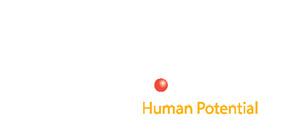
ePublication EditorialCalendar2022-23 Checkoutthenewandupcoming themedHRtopicsinHRStrategy& PlanningExcellence. Check ePublications Editorial Calendar Here. Would you like to submit an article? | Write to us at ePubEditors@hr.com Submission Guidelines 1 HR Trends 2023 Dec 2022 2 HR Roles/Jobs of the Future Jan 2023 3 HR For Small Businesses Feb 2023 4 The Next Wave of Automation at Work/ Ethical AI and Blockchain Mar 2023
Trinda Searle is Executive Vice President of People & Culture at 360insights. Trinda is passionate about helping people and understands that when people strategies are done right, it helps the business thrive. Recognized for an award-winning culture, globally, 360insights has been ranked a Best Workplace™ in Canada for the last 10 years, and a Best Workplace™ in the UK for 2022 in the first year they applied. Prior to joining 360insights, Trinda helped grow her previous company’s Canada-centric footprint, expanding to a worldwide employee base, while maintaining the company’s high value and profitability goals.
In an exclusive interview with HR.com, Trinda talks about her HR journey and shares valuable insights on various workplace issues, building the HR team of the future and much more.
Inspiring the Next Generation of HR Leaders CHRO CORNER
Where do HR leaders draw inspiration from? What are their worst nightmares? How did they stand the test of the changing times?
In this segment, we will trace your journey to the top.
This is your story - a story that is made of extraordinary accomplishments, methods that helped you overcome adversity, innovative programs that you led, and fundamental changes that you brought in. It's your chance to inspire the next generation of leaders.
Exclusive Interview with Trinda Searle, Executive VP, People & Culture, 360insights
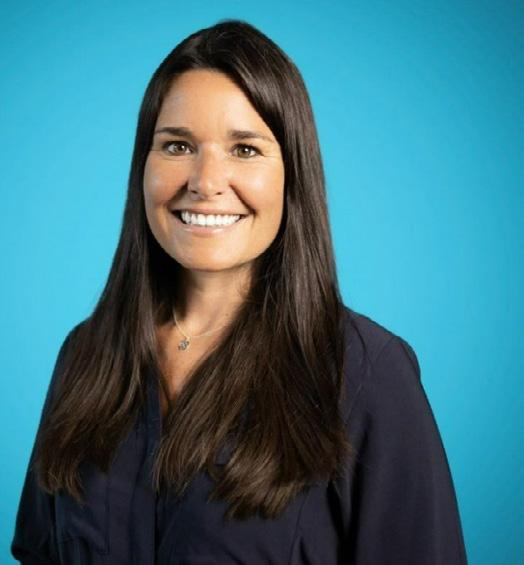
Excerpts from the interview:
Trinda: I returned to school for HR in hopes of strengthening my ability to achieve a leadership role in my former Forestry career. Instead, I developed a passion for HR centric work, and 20+ years later here I am. Seeing the larger impact of my work on people keeps me accountable and my ability to positively influence business outcomes, through people development, excites me. Working for great leaders who set a strong example to follow and provided opportunities and exposure to “let me fly” has had a tremendous positive impact. To be honest though, it was not until I experienced toxic leadership earlier in my career, that I learned “what not to do.” Frankly, that experience may have had the most positive impact on my career. Sometimes it takes experiencing bad to truly appreciate and know what good looks like.
Submit Your Articles HR Strategy & Planning Excellence presented by HR.com November 2022 34
QWhat has your HR journey been like, and what influenced you the most to positively impact your career?
Trinda: Shedding the need to be popular versus respected, and gaining some risk tolerance were challenges I faced earlier in my career. Today my challenge is to operate on the right parts of the business, striking the right balance between being informed, involved and supportive while letting my own team fly.
Name: Designation: Company: Total number of employees:
Trinda Searle
Executive Vice President of People & Culture
Trinda: HR professionals have been challenged with topics outside of our expertise and stress-tested our resilience, pandemic response planning and increasing mental health support requirements to name a couple. Our natural instincts are to care for people and the inability to directly remedy all the challenges they face at work, despite our best efforts, is difficult and often an area for criticism. Just as we support and equip leadership, HR teams need similar support, training and check-ins for their own well-being.
HR do about “Quiet Quitting?”
Trinda: Double down on communication, recognition and engagement activities, people who are connected, celebrated, and engaged are more productive and accountable. Train leadership and ensure they have time to lead, it's okay to be a player/coach but the proper order is coach, then player.
When did you join the current company: Total experience in HR: Hobbies: What book are you reading currently?
360insights 600 2019 22 years
Hiking, Snowboarding, Reading
Local Women Missing by Mary Kubica
Trinda: Yes, companies need to invest in people and their Employee Value Proposition. Cash compensation is not enough nor the sole winning strategy. New roles that support the development of individuals and inclusion such as learning and development teams, career coaching and DEIB specialists, I believe will continue to rise across the profession.
Be close to the business including its financial forecast and North Star and build a team that can support those goals as if they needed to be achieved today. Playing catch up does not serve your people or the business well. Also think bigger, look beyond the direct People Team on staff and build an ecosystem of People and Culture ambassadors through leadership, focus groups and employee-led affinity groups. Allies are fundamental to the success of the core HR/People Team.
What is your leadership mantra?
Trinda: To be transparent, humble, logical, and inspiring
Submit Your Articles HR Strategy & Planning Excellence presented by HR.com November 2022 35
What were your challenges during the early days of your career compared to those of today?
What according to you is one of the most overlooked issues facing HR today?
What can
Do you see any new job roles being created by the transformation?
With so many changes happening, how do you build the HR team of the future?
CHRO Corner Q Q Q Q Q
Q Would you like to comment?
Best-in-Class Education For All Your Learning And Training Needs
HR.com prepares HR leaders to be strategic business leaders by curating and delivering best-in-class products and services so you don’t have to waste time seeking out content on your own. We leverage technology and experience to provide you with customized solutions to best meet your professional development needs at every stage of your career.
From on-demand to cohort-based offerings, below is a listing of virtual courses that will challenge and empower you by giving you the tools to drive innovation and success in your organization.
Shift Corporate Coach Program™
Learn practical coaching skills and tools you can put to work in your organization right away with the first part of the Shift Corporate Coach Program™ on HR.com! This 2-part program provides business leaders with the right coaching toolset for ultimate coaching success through an independent online learning program and live virtual coaching clinics and circles.
HR 4 Non-HR Managers
A new virtual course to help your managers maximize their potential! Inspired by HR.com’s educational book, HR Fundamentals for Non HR Managers, this virtual course will equip managers and supervisors with strategies, knowledge, how-to’s, and hands on exercises to effectively lead people with an HR lens.
ABCs of HXM
Introduction to Human Experience Management (HXM). This virtual course will give you an introduction to HXM through an interactive learning experience. Learn about HXM, its components, and how to apply it to optimize the employee journey, and to create inspired more fulfilling work environments and interactions with all stakeholders that lead to better business results.
HR Analytics for Business Partners
Become a more data driven HR Professional. This course will arm you with the skills to create data-driven interventions that solve real problems and provide you with the skills you need to present your findings back to the business and make a convincing case.
Quality Management Basics
This course provides a firm foundation for anyone looking to understand quality management practices and techniques.
Data Analysis for Improving Organizational Performance
When using data analysis to improve organizational performance, it’s vital to employ the tools that bring the data to life and keep people engaged in the process. Organizations in both the public and private sectors often use tools and frameworks to deliver the data, and the information the data might suggest, to its staff. This inter mediate-level course will explain some of these measures and tools, describe some specific measurements, and explain the relationship between assessment and strategy.
Gain access to more expert-led courses.
At HR.com, we are committed to educating and inspiring HR professionals and helping them build meaningful and impactful careers. With products and resources rooted in education, research, and leveraging cutting-edge technology, we help at every career stage - and over 1.92 million HR pros agree! (How could that many people be wrong?) By delivering best-in-class learning products, 250+ annual webcasts and 30+ world-class events, and innovative and thought-provoking research through the HR Research Institute, HR.com strives to inspire and strengthen workforces to change the world. HR.com also offers the most comprehensive HR certification exam preparation and guarantees a passing score on all SHRM and HRCI certification exams. Technology and experience drive our customized solutions that will help you become the best and most successful version of yourself.
HR Strategy & Planning Excellence presented by HR.com November 2022 36
The Future Of Work: Five Considerations For Flexibility
Flexibility is the new currency for employees
By Keith Falk, OneDigital
The future of work continues to shift. Before 2020, flexible work arrangements were rare, primarily reserved for high-performing working parents. Think back just a few years ago most of us could never imagine an entry-level employee working from home. They would need to prove their worth first and then have a valid reason (in the eyes of their manager) for why they needed the flexibility. Fast forward to today and working from home has quickly become the norm for many companies.
McKinsey’s American Opportunity Survey found that 58% of employees can work from home at least one day a week, and 35% have the option to work from home five days a week. In the current challenging job market with nearly double the number of jobs than available workers, most employers are struggling to find and keep high-quality talent. Providing a unique sense of flexibility is no question a fundamental benefit in winning the war for talent.
Flexibility is the New Currency for Employees
Employers who have embraced a flexible workplace approach are seeing significant advantages compared to employers who are requiring a fully in-person environment. In fact, 70% of job seekers find flexible workplaces attractive. With 3.5% unemployment and

4 million quits in July, employees are effectively voting with their feet. Simply put, rethinking the nature of work is a requirement for today’s workforce, and if your company is not keeping up with this workforce need, you’ll likely be one of the employers witnessing mass exits.
Regarding flexibility, there is no “one size fits all” model. Flexibility should, and will, look differently for every employer. What is clear is that regardless of industry and function, employers must rethink what flexibility means to them and their unique workforce. Gone are the days of writing off flexibility simply because it’s not the norm. Employers must take a thorough look at their workplace and think creatively about flexible solutions.
Submit Your Articles HR Strategy & Planning Excellence presented by HR.com November 2022 37
There is no right, wrong or perfect way to address flexibility in the workplace. If the pandemic taught us anything, it’s that business can function in varying and unconventional ways. As you look to implement flexibility, think about these five considerations:
1. What are you trying to solve? From retention and employee satisfaction, to attracting new talent and various other business issues facing employers, it’s important to clarify what you are hoping to achieve through a more flexible workplace. Without identifying an end goal, your efforts for flexibility will likely miss the mark.
2. Know your audience. Look at the demographics of your workforce and understand what your employees want from flexibility. If you’re not sure, ask them! With a multigenerational workforce, one flexible plan may not be the right fit for all your employees. For example, working parents or those caring for aging parents may have different needs than younger generations who have grown up with technology and are used to working remotely. What’s important, however, is to avoid making assumptions, and rather ask your employees directly what they value.
3. Mind the gap. Being equitable is the cornerstone of any employment practice, and flexibility is no different. Depending on the job function, this can be challenging and work against the very goals you are looking to achieve. For example, a flexible work program
may widen the divide between exempt and nonexempt employees because some jobs may not lend themselves to the same flexibility, leading to low morale within the team that may not be able to take advantage of the same opportunities.
4. Test it out. Have a trial period to evaluate what is working and what isn’t. Setting up regular intervals to survey employees and managers about the success of the program can help provide real time feedback that allows you to make changes to the program during a pilot time. Additionally, set metrics to evaluate success and utilize this testing period to see how you track toward your goals and whether the current state of flexibility is providing the needed output.
5. Set clear expectations When it comes to flexibility, it’s important to make sure that employees and managers understand that there may be a business reason to change the program, and nothing is set in stone. This transparency allows for less confusion and negativity in the future if policies change.
As the future of work continues to evolve, opportunities for flexibility sit squarely at the center of any successful business. Employers that adapt and think creatively about flexible options will be better equipped to succeed in the future.
Keith Falk is a member of OneDigital West Region as Regional Managing Director of HR Consulting. Prior to joining OneDigital, Keith led human capital and operations for Fortune 500 and technology start-ups for both regional and global environments.
Would you like to comment?

Submit Your Articles HR Strategy & Planning Excellence presented by HR.com November 2022 38
The Future Of Work: Five
Considerations For Flexibility
VIRTUAL EVENTS & HR.COM WEBCASTS UPCOMING
VIRTUAL EVENTS
Successful
November
November 30, 2022
December 7-8, 2022
View
WEBCASTS
View
Behind
November 29, 2022
November 30, 2022
December 1, 2022
December 6, 2022
December 8, 2022
our Upcoming Webcasts Schedule and Register Today! www.hr.com/upcoming_webcasts
our Upcoming Virtual Conference Schedule and Register Today! www.hr.com/virtualconferences
Compliantly
the Screen: How to
Hire Someone
12:00 PM - 1:00 PM ET REGISTER
Uses AI-Powered Texting for Recruiting and More
How HR
REGISTER
1:00 PM - 2:00 PM ET
Talent
Retire
Management Strategies From Hire to
29, 2022 REGISTER
Motivators
the Quiet Quitting
How Intrinsic
Can Solve
Crisis
11:00 AM - 12:00 PM ET REGISTER
Talent
The Impact of Leave Benefits on
Retention
1:00 PM - 2:00 PM ET REGISTER
Employee
The Evolution of
Recognition2023 Trends
11:00 AM - 12:00 PM ET REGISTER
Personalized
Services and Experiences
The Future of
HR
REGISTER
The Future of Recruitment Technologies 2022
REGISTER
Thank you for partnering with us!
THANK YOU
Art of Mentoring combines evidence-based mentoring expertise with the latest technological innovations to enable organisations to develop impactful, costeffective mentoring programs.


Sterling, a leading provider of background and identity services, helps 47k+ global clients create people-first cultures and hire with confidence.


At Jobvite, our mission is to empower organizations to hire and retain the talent they need to succeed. Our goal is to deliver the world’s most innovative and essential talent acquisition solutions.
Providing best-in-class consulting, rigorous analytics, and datadriven insights that help organizations make factbased decisions.
SkillSurvey’s talent intelligence platform provides actionable insights and optimizes talent decisions with feedback across the entire employee lifecycle.
LEARN MORE
LEARN MORE
LEARN MORE
LEARN MORE
LEARN MORE
Harrison Assessments uses predictive analytics to help organizations hire, develop, lead and engage talent.


TRACOM is the leader in Social Intelligence training. We offer SOCIAL STYLE, Resilience, EQ and Agility assessments and training programs.


EVERFI’s workplace training offerings empower employees to transform their organizations' workplace cultures with impactful, change-driven courses that go beyond compliance.
Paychex, Inc. (Nasdaq: PAYX) is a leading provider of integrated human capital management software solutions for human resources, payroll, benefits, and insurance services.

PARTNER WITH US
LEARN MORE
LEARN MORE LEARN MORE
LEARN MORE



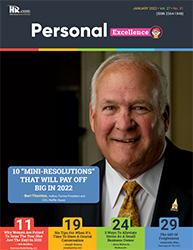


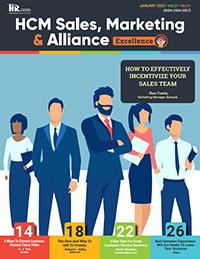
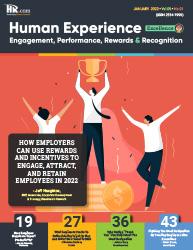

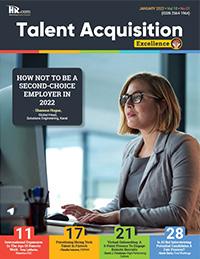



Like to submit an article? Use our online submission form or for more information go to www.hr.com/ExcellencePublications Publications 13 Targeted Publications to Reach Your Audience Informing, Educating, Enlightening and Assisting HR professionals in their personal and professional development, the Excellence series offers high-quality content through the publications!





























 Dr. Beverly Kaye CEO, BevKaye&Co.
Dr. Beverly Kaye CEO, BevKaye&Co.
















































